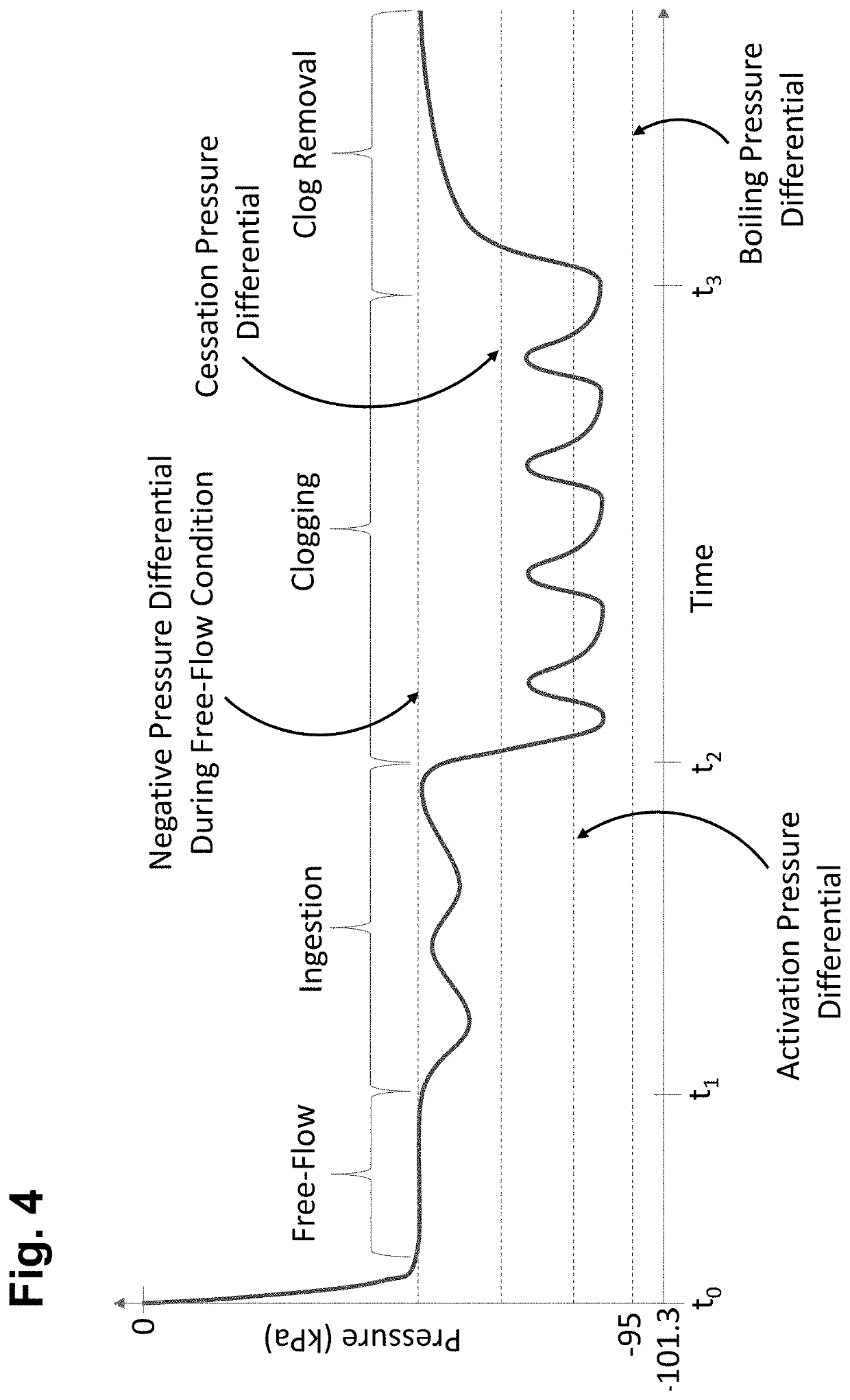Mechanically resonant pulse relief valve for assisted clearing of plugged aspiration
a pulse relief valve and mechanical resonance technology, applied in the field of medical devices and intravascular medical procedures, can solve the problems of insufficient or irregular blood flow, embolism of blood clots or thromboses, insufficient blood flow through blood vessels, etc., and achieve the effect of preventing fluid communication
- Summary
- Abstract
- Description
- Claims
- Application Information
AI Technical Summary
Benefits of technology
Problems solved by technology
Method used
Image
Examples
Embodiment Construction
[0073]Referring to FIG. 1, one embodiment of an occlusion aspiration system 10 constructed accordance with the disclosed inventions will now be described. The occlusion aspiration system 10 generally comprises an aspiration catheter 12, an aspiration source 14, a pressurized fluid source 16, a tissue collection container 18, and a manifold 20.
[0074]Referring further to FIGS. 2 and 3, the aspiration catheter 12 comprises an elongated catheter body 22, an aspiration conduit 24 (shown in phantom in FIG. 3) extending through the catheter body 22 between a proximal end 28 and the distal end 30 of the catheter body 22. The proximal end 28 of the aspiration catheter 12 remains outside of a patient 1 and accessible to the operator when the occlusion aspiration system 10 is in use, while the distal end 30 of the catheter body 22 is sized and dimensioned to reach an occlusion 2 (e.g., a clot) with a remote location of the vasculature 1 of the patient, as best shown in FIG. 3. The aspiration c...
PUM
 Login to View More
Login to View More Abstract
Description
Claims
Application Information
 Login to View More
Login to View More - R&D
- Intellectual Property
- Life Sciences
- Materials
- Tech Scout
- Unparalleled Data Quality
- Higher Quality Content
- 60% Fewer Hallucinations
Browse by: Latest US Patents, China's latest patents, Technical Efficacy Thesaurus, Application Domain, Technology Topic, Popular Technical Reports.
© 2025 PatSnap. All rights reserved.Legal|Privacy policy|Modern Slavery Act Transparency Statement|Sitemap|About US| Contact US: help@patsnap.com



